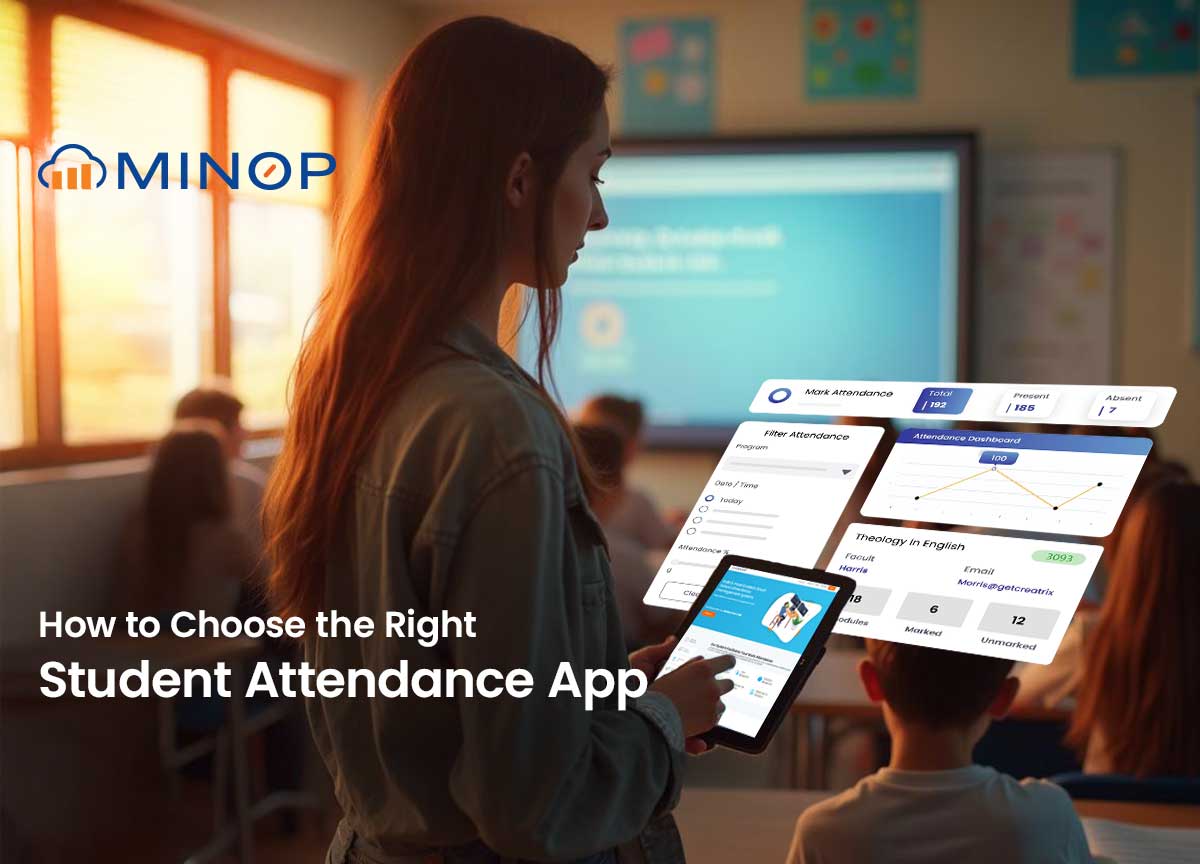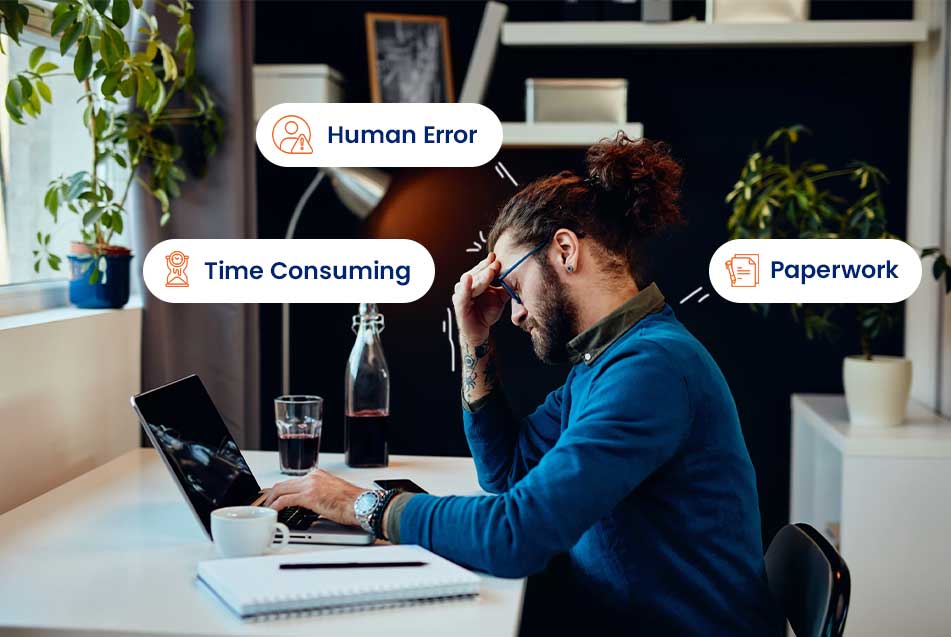How to Choose the Right Student Attendance App
Posted On:- 04 March, 2025 By:- Vaibhav Maniyar
An attendance system is a process in which a student attendance app has different roles and responsibilities. Its purpose is less about structure and more about participation. The only thing you really need is the reliability of the app. Unless you have that, your other features are meaningless. Attendance tracking is something you do consistently in real time. There’s no way to exaggerate or overemphasize this fact. It’s the most important thing to remember if you want an efficient system.
Understanding Attendance Tracking as a Process
There was a time when attendance was a simple act of raising a hand, calling out a name. But technology reshapes even the simplest of habits. The teacher student attendance app now integrates with broader school systems, linking schedules, lesson plans, and institutional records. The online student attendance system, meanwhile, connects to performance metrics, engagement analytics, and digital learning platforms.
Before any issues of interface, features, or automation can be addressed, the fundamental questions are:
How accurate is the tracking?
How often can it generate reports?
How many students can the system handle?
How does the app integrate with existing systems?
How many years can this app provide seamless performance?
How much delay (and, for that matter, how much data loss) can the institution endure?
The teacher student online attendance system is not simply a mirror image of online student attendance. The teacher attendance app ensures teachers mark their time, tracking their schedules, and maintaining the rhythm of instruction. It is an administrative tool, a record of professionalism, a means of ensuring consistency in the act of teaching itself.
The Reality of Implementing an Attendance System
Institutions that, at first, had excellent plans: digital records that updated effortlessly, systems that processed attendance with that crucial element of automation, never failing where one expected, so that administrators and teachers were always confident in their data. Promising solutions, as they say. But to make it an indispensable tool, to go beyond the initial launch, the pilot programs, the test runs that worked so well which is to take the next step meant they needed to rely on the app consistently for years.
Some kept saying that next semester, or next year, or after they upgraded their network, or when they got better funding, or when they had a dedicated IT team (because they needed proper maintenance; it couldn’t be just any staff member troubleshooting it)... sometime in the foreseeable but not the immediate future, then they would implement the system fully.
Fingerprint Recognition:
Captures and matches fingerprints for authentication, though less effective for younger students due to evolving prints.
Facial Recognition:
Identifies students using unique facial features, providing a contactless and efficient method.
Iris Recognition:
Scans the distinct patterns in the eye’s iris, offering one of the most precise biometric methods.
Voice Recognition:
Uses vocal patterns for identification, though less common in student attendance tracking.
A few of these institutions would even set up the system. A well-designed dashboard, a user-friendly interface, the hardware, the connectivity, the training sessions, maybe even a dedicated support team. But after the system is ready, you have to use it. Every day. (Sometimes it takes weeks or months even to get staff fully on board.) And that’s the reliability they didn’t have.
Why Manual Attendance Systems Fail
There’s no harm or blame in not having a fully optimized system. But it is very frustrating to have some of the features, almost all of the features, except the one you really need.

The institutes that emphasize student attendance (if they are fortunate or unfortunate enough, as the case may be, to rely on manual tracking) don’t often talk about this because:
You cannot ensure accuracy in student attendance tracking with outdated methods.
Teaching happens in physical or virtual rooms, surrounded by structured schedules and fixed processes.
They are not developers, they are educators. They may implement systems on the side, but few have built their institutions around technology.
Their schedules, their responsibilities, their daily interactions, their professional environments, all revolve around classrooms filled with students and faculty.
The Need for Automation in Attendance Tracking
The automation of online school attendance is not just about efficiency. It is about redefining presence. A teacher's role is no longer just to instruct but to adapt, to engage, to ensure that the mere act of marking attendance is not mistaken for true learning. A student’s role is no longer just to show up but to participate, to be seen not just by a name on a screen but by the depth of their engagement.
The environment is always the lesson. That’s the challenge with traditional student attendance management systems. What they teach, more than anything else, is how to maintain attendance logs. Thus, most manual tracking methods, by their very nature, overlook the core problem institutions face.
Errors and inefficiencies persist.
Attendance records are scattered across different subjects, departments, or files.
The ratio of attendance recorded to actual presence is much better in automated systems because they involve processes that work.
Fluctuating schedules, unauthorized absences, late arrivals, and human errors remain locked within outdated registers and spreadsheets.
The Long-Term Reliability of Student Attendance Systems
Online school attendance systems are built to answer questions like if a student is logged in, are they truly there? If their name appears, have they truly engaged? The student attendance app questions, challenges, and seeks to ensure that learning happens in a meaningful way.
The thing about student attendance systems is this: you will have to rely on them for years before realizing whether they truly work and it may take years more before institutions embrace the right technology.
Students may misuse the system.
Faculty may resist the new system.
Some institutions stick to outdated methods while others move ahead.
An institution can deploy technology but fail to integrate it effectively.
You can have an attendance system in place and still struggle with accuracy.
The rise of the teacher attendance app and the student attendance app presents a fundamental shift, a transformation of accountability, tracking, and engagement. Technology, you see, is a powerful tool. Not because it functions on its own, but because of how it integrates with the needs of its users.
They adapt to the needs of the institution.
They don’t just replace manual processes; they transform them.
They make tracking attendance easier, more reliable, and more efficient.
Locking yourself into a system, relying on a student attendance tracker that doesn’t evolve, and ignoring the very signs that led you to seek a new solution in the first place that’s how inefficiencies persist.
Choosing the Right Student Attendance App
Most schools can blame their inefficiencies on outdated processes, on the way institutions have always managed records, or on the general resistance to change.
No school is forced to rely on old methods.
No institution seeks a student attendance tracker without believing that something better is possible.
Schools adopt a student attendance system with a purpose, making a conscious decision to modernize.
It takes time for these choices to become instinctive—a long process of evaluating features, comparing tools, and weighing what truly benefits both students and staff. When that process is complete, schools find themselves with a system that either enhances daily operations or one that complicates them further.
At the end of the day, if you've chosen wisely, your attendance monitoring system becomes an asset, ensuring that online student attendance is seamless and transparent.
The wrong system can become a burden rather than a solution.
Schools risk investing in tools that don’t truly meet their needs.
Without a reliable student attendance management system, the cycle of inefficiency continues.
Administrators and educators may find themselves managing a tool that increases their workload instead of reducing it.
Choose MINOP as your school attendance app!
If you’re a small school, your requirements may be simple: an intuitive, cost-effective solution. If you’re a large university, you might need an app that integrates seamlessly with existing student management systems. If you prioritize security, biometric authentication might be essential. If you value convenience, RFID or GPS-based tracking could be the answer.
The right student attendance app such as MINOP transforms the way institutions operate, making attendance tracking not just a task, but an effortless part of the school day. And that’s the difference between technology that hinders and technology that truly helps.
Minop offers an advanced biometric and RFID attendance solution that seamlessly integrates with educational institutions. Designed for accuracy, efficiency, and security, Minop eliminates traditional tracking challenges, making attendance management effortless. With real-time reporting, instant notifications, and robust security features, Minop is the ideal choice for schools and universities looking for a reliable attendance system.

Comments